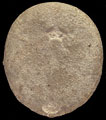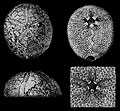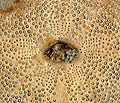The Echinoid Directory
Vologesia Cotteau & Gauthier, 1895, p. 65
| Diagnostic Features |
|
|---|---|
| Distribution | Upper Cretaceous (Campanian-Maastrichtian) of Europe United Arab Emirates and Oman. |
| Name gender | feminine |
| Type | Vologesia tataosi Cotteau & Gauthier, 1895, p. 66; by monotypy. Holotype: University of Lyon Palaeontological Collections EM 40798. |
| Species Included |
|
| Classification and/or Status | Irregularia; Cassiduloida; Echinolampadidae. |
| Remarks |
|








